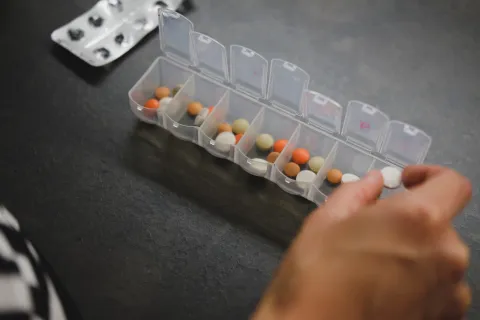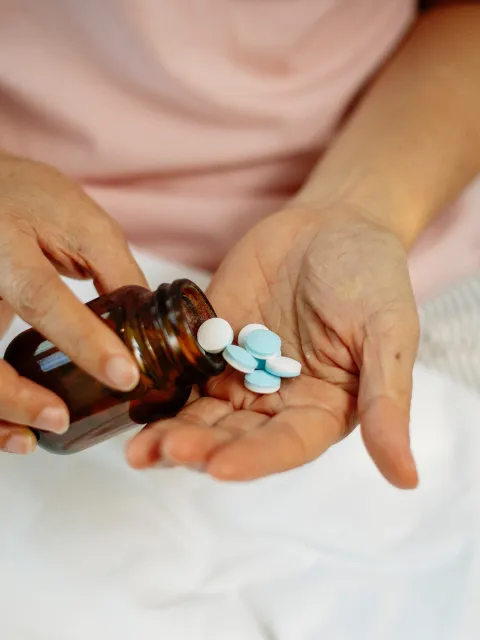The unacceptable equity gap in the availability of essential medicines for palliative care
A large majority of the world population cannot access medication essential to palliative care due to multifaceted and systemic barriers. This is a question of human dignity and a problem that has only intensified during the pandemic.

What is World Hospice and Palliative Care Day?
World Hospice and Palliative Care Day is a unified day of action to celebrate and support hospice and palliative care around the world. World Hospice and Palliative Care Day is organised by a committee of the Worldwide Hospice Palliative Care Alliance, a network of hospice and palliative care national and regional organisations that support the development of hospice and palliative care worldwide.
October 10th marks World Hospice and Palliative Care Day. This day serves as a reminder that effective palliative care, which starts from diagnosis and includes pain management, is not only a health but a human rights issue. It is about the right to dignity, to which each individual is entitled.
The truth is, however, that more than 80% of the world’s population in need of analgesics has little or no access to these pain relief medications that are critical in caring for cancer patients, particularly in the advanced stages of a disease. The numbers for late-stage cancer patients are stark: some six million people die from cancer every year without being treated adequately for their pain because access to essential medicines, such as morphine, is almost non-existent.
In June this year, the World Health Organization (WHO) reported on widespread disruptions to essential health services due to the coronavirus pandemic and how this has affected service delivery for Non-Communicable Diseases (NCDs): 20% of countries reported the unavailability of essential medicines, medical diagnostics or health products.
Yet this shortage of medicines for cancer care pre-dates the pandemic by decades. To address it, WHO first established a Model List of Essential Medicines (EML) in 1977 to help countries prioritise medicines in their national essential medicine lists (NEML) in an attempt to increase access. This list, which includes essential medicines for cancer and palliative care is updated every two years. UICC and its members have played important roles respectively working with WHO on updating the WHO EML and with their countries’ relevant authorities on national EMLs (NEMLS).
Other barriers to accessing palliative care and pain relief medication
Despite the inclusion of pain relief medications on the EML, acute shortages and access to palliative care medication remain and are concentrated to a large degree in low- and middle-income countries.
The disparity in accessing a vital analgesic such as morphine to treat moderate to severe pain is staggering, with 92% of the world’s supply consumed by just 17% of the world’s population, located primarily in high-income countries. We need to address the underlying systemic barriers at the international level that contribute significantly to the inequity in accessing essential medicines for palliative care and the widening gap of availability between upper-income and lower-income regions.
- Shalini Jayasekar Zürn, Senior Advocacy Manager, UICC
The primary barrier in providing equal access to palliative care medicines is that while they are essential to easing the suffering of critically ill or end-of-life patients, they generally contain psychoactive substances controlled under the international drug control framework. Layers of institutional, cultural and regulatory barriers are therefore added to issues of procurement, supply and infrastructure, essentially out of fear of diversion of these substances to non-medical or recreational use.
For instance, while Afghanistan is the world’s leading producer of opium, the availability of morphine there is very low, with doctors afraid to prescribe it even for end-stage cancer patients. For similar reasons, 29 countries in Africa reported no use of morphine from 2000 to 2009 – a situation that continues to exist today. According to The Economist, for instance, the average patient in the US has access to over 55,700mg of morphine compared to 13mg in Senegal.
Indeed, fears of addiction and diversion from medical prescription to non-medical misuse are among the several factors that contribute to a dearth of pain relief medication, along with individual and cultural biases and lack of information and training. These compound and sometimes are a result of national drug policies, which induce fear of prosecution for prescribing medicines with controlled substances, and an international classification system for psychoactive substances that is struggling to keep with up with globalisation and to meet the needs of the medical community, particularly in LMICs.
The response of the international community
Mid-August, the International Narcotics Control Board (INCB) and the United Nations Office on Drugs and Crime (UNODC) – two entities charged with overseeing the application of the international drug control conventions – as well as WHO, issued a statement that called on governments “to ensure that the procurement and supply of controlled medicines in countries meet the needs of patients, both those who have COVID-19 and those who require international controlled medicines for other medical conditions.”
In order to do so, the statement reminds governments that public health emergencies allow for simplified control procedures for the export, transportation and supply of controlled substances for medical use “even in the absence of the corresponding import authorisations and/or estimates”.
There is no silver bullet, no simple solution to the lack of access to essential medicines for palliative care. This is a multifaceted problem, with causes of a diverse nature that require a holistic approach and innovative solutions, yet the challenge must be met if we wish to ensure that everyone who needs palliative care has access to it. This is a moral imperative – no-one should die in unbearable and avoidable pain.
- Dr Cary Adams, CEO, UICC
The question is, on the one hand, whether the allowance to simplify control procedures in time of crisis only points to a weakness in the system itself and, on the other, whether it will facilitate access in practice, since many of the barriers are not so much procedural as cultural and legal.
As far back as 2008, the Senlis Council proposed a “poppy for medicine” project, which built on successful legal opium cultivation models for medicinal purposes in Turkey and India.
In 2018, the West Africa Commission on Drugs, convened by former UN Secretary-General Kofi Annan and chaired by the former president of Nigeria, Olusegun Obasanjo, published a Model Drug Law for West Africa that offered several pathways: special protection for medical staff to help remove barriers to accessing pain relief; loosening how controlled substances are classified in national systems to align with the greater flexibility provided by the international drug conventions; and establishing an “Inter-Ministerial Coordination Mechanism to monitor drug control from a health and human rights perspective.”
Indeed, resolving these unacceptable shortages in essential cancer care and pain relief medications is crucial to achieving sustainable development goals and ensuring that everyone can access the highest attainable standard of health. It is “an ethical imperative” – as the statement issued by WHO, INCB and UNODC clearly indicates – and a human rights concern.
Last update
Thursday 23 March 2023
